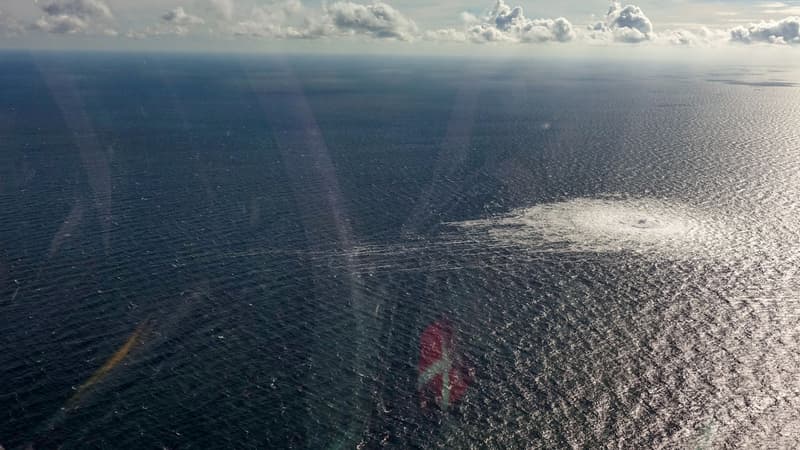The investigation into the Nord Stream 1 and 2 gas pipeline incidents, identified as sabotage, continues. Four spectacular leaks have been detected following the underwater explosions on September 26 off the Danish island of Bornholm, between southern Sweden and Poland.
While the bubbling in the water over Nord Stream 2 had not yet stopped on Wednesday, according to the Swedish coastguard, today it is another consequence of these leaks that is of concern.
While neither of the two pipelines was carrying gas at the time of the explosions, they still contained pressurized methane, noticeably causing the bubbling. But this one also escaped into the atmosphere. Although invisible to the naked eye, models show that a cloud of methane flew over several countries, including France.
Emissions comparable to those of Paris for a year
Images from the Icos institute (Integrated Carbon Observation System), in charge of observing the flow of greenhouse gases in Europe, show that this methane cloud first flew over Finland, Sweden and Norway to then pass by the North Sea coast and then through the United Kingdom before arriving in France.
It is difficult for scientists to estimate the amount of methane that has escaped from pipelines. However, the Icos compares it with the emissions released during an entire year from cities like Paris and from an entire country like Denmark.
However, methane is not directly dangerous to human health, especially since, in this case, the cloud is moving at high altitudes.
One of the most powerful greenhouse gases.
It is not considered toxic to humans, but it is far from it for the planet. “It is the second most abundant anthropogenic greenhouse gas in our atmosphere causing climate change,” says the European Space Agency.
“Methane is one of the most potent greenhouse gases. Over a period of 100 years, it heats the atmosphere about 30 times more than carbon dioxide (CO2)”, writes Icos.
Although methane partially dissolves in water and is less persistent in the atmosphere than carbon dioxide, it is believed to be responsible for nearly a third of global warming already recorded.
“If it was deliberate, it’s an environmental crime,” Jeffrey Kargel of the Arizona Planetary Research Institute said after the blasts.
“But if the amount of gas is obviously significant, it is not the climatic disaster that one might think,” he tempered however. Abundant in the same direction, the European Space Agency writes: “the rejection of Nord Stream pales in comparison with the 80 million tons emitted each year by the oil and gas industry.”
Source: BFM TV


